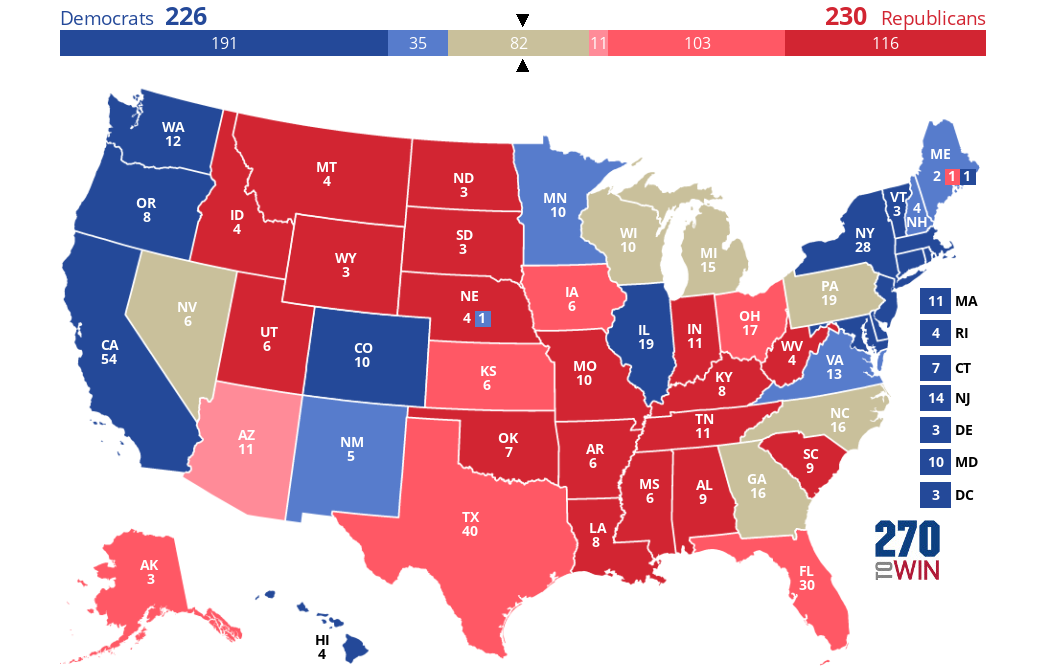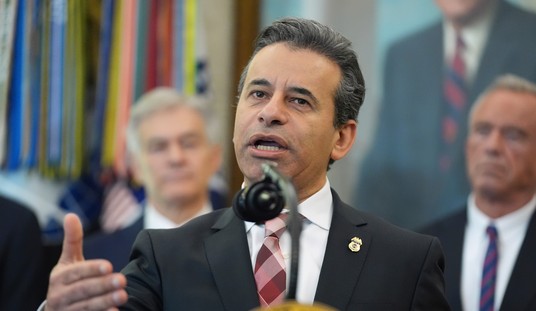There are 538 Electoral College votes up for grabs on November 5. What are the chances that the two candidates will be tied when all the votes are counted? It's a long shot, of course, but in a close election like this one, it's a distinct possibility.
Six states will likely determine the outcome of the election: Nevada, Georgia, Arizona, Pennsylvania, Michigan, and Wisconsin. At present, Kamala Harris is virtually assured of winning 226 electoral votes, while Donald Trump is currently projected to win 219 electoral votes. With 270 electoral votes needed to win, there are several combinations of states in either candidate's column that would give them 270 electoral votes and the win.
Republicans need 51 electoral votes, while the Democrats need 44. The big states of Michigan and Pennsylvania are key, of course, and if Republicans take both of them, the Democrats are in a world of hurt. They'd have to win Georgia, Arizona, Wisconsin, and Nevada as well as three of the four at-large electoral college votes in Maine and Nebraska to achieve an electoral college tie of 269-269.
That's not an impossible scenario at all. And if it comes to pass, Donald Trump would eventually become president once the House casts its votes by delegation.
Assuming minimal changes are made to the composition of the House in the November elections, Trump would be the overwhelming favorite to win. He would take the votes of Wisconsin, North Carolina, Arizona from Ms. Harris’s column despite her winning them in November. Surprisingly, should Congresswoman Mary Peltola hold on this yeaer, Ms. Harris would win Alaska’s vote in January.
Currently, Republicans control 27 of the 50 state congressional delegations, meaning Trump would have a two-vote margin to win the presidency in the House.
The fun would happen in the Senate where the election for vice president would happen in the event of a tied electoral college.
In the Senate, it would be a different story for the vice presidential race. Each senator is granted one vote for vice president, and whoever emerges with 51 votes is elected. If Democrats are able to run the table in November by keeping every vulnerable incumbent in their seat, while also making sure the Congressman Ruben Gallego and Congresswoman Elissa Slotkin win their Senate races in Arizona and Michigan, then Democrats will have exactly 50 votes.
Assuming every Democrat votes for Mr. Walz to be vice president and every Republican votes for Senator Vance, the vote would result would be 50 for each man — meaning the tie-breaking vote would come from none other than Ms. Harris, who would still be the president of the Senate by the time the upper chamber voted for vice president in January. She undoubtedly would cast her vote for Mr. Walz, assuring that her running mate ascends to the White House without her under a second Trump presidency.
If betting is your thing, the oddsmakers are also thinking that the race is tied. Election Betting Odds, which tracks betting numbers from four separate books, "now believe both Harris and Trump have a 49.1% chance of winning the election."
Trump was two points down after the DNC but has now caught up and is slightly ahead after Robert F. Kennedy Jr. withdrew. The British give Trump the edge with a 49.5% to 48% for Harris.
Betting on an Electoral College tie is a poor bet, but if you like long shots, it's as good a bet as any.











